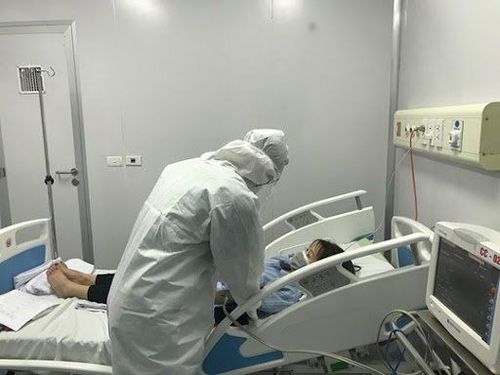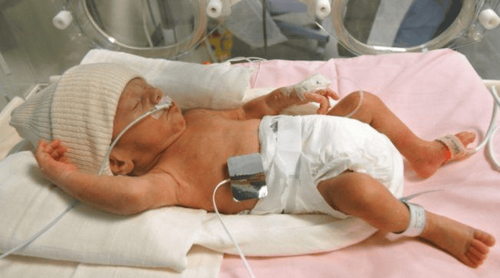This is an automatically translated article.
Prolonged mechanical ventilation will put the patient at risk of nosocomial infection, lung damage, and possibly even death for the patient. The process of weaning off mechanical ventilation requires a lot of effort, monitoring and caution because the patient can face risks such as cardiovascular disorders, gas exchange disorders, increased respiratory work, muscle fatigue.... lead to failure of mechanical ventilation. So what to do when weaning from ventilator fails?
1. How to wean off the ventilator?
Weaning off the ventilator is the process of gradually reducing the ventilator's support and gradually increasing the person's spontaneous breathing work to the standards for leaving the ventilator. This process is usually done by applying the patient to partial breathing assistance and gradually reducing the level of support of the machine.
This process is usually applied to patients whose underlying disease is slowly improving with prolonged duration of the patient's mechanical ventilation.

Cai thở máy áp dụng khi các bệnh lý nguyên nhân cải thiện chậm
2. Weaning off ventilator failed
Failed weaning is testing spontaneous breathing or the need for treatment within 48 hours of extubation. In this case, the patient may still need to be on the ventilator after any trial period of weaning. As such, weaning off mechanical ventilation will become more difficult in patients who have tried and failed before. Excessive secretion, ataxia, prolonged mechanical ventilation, and upper airway disturbances are predisposing factors for ventilator withdrawal.
The impact of weaning failure on patients is that it will have a long-lasting, serious impact on the use of health care resources such as financial, physical....The longer the weaning time, the worse the weaning. Ventilating will be more difficult and more laborious.
3. Causes of failure to wean from mechanical ventilation
Some causes of failure of weaning from ventilator:The first cause of failure of weaning is usually because the machine's respiratory work is greater than the patient's capacity (regardless of the disease's pathology). when mechanical ventilation is indicated). These causes include: abdominal distension, increased CO2 production (increased metabolism, excessive feeding, especially of the carbohydrate component), ventilators (inappropriate inspiratory flow, low-sensitivity valves, duration of time). long response...) The patient has not been treated thoroughly

Bệnh nhân chưa đáp ứng đủ tiêu chuẩn khiến cai máy thở thất bại
The patient's nutritional status is poor. The patient has a number of comorbidities: heart failure, anemia, fever, hospital-acquired infections due to mechanical ventilation. Respiratory muscle atrophy due to prolonged mechanical ventilation Sputum congestion, atelectasis: The patient has increased sputum secretion due to hospital-acquired pneumonia, or may cough ineffectively due to weakness or large-scale atelectasis due to sputum obstruction Laryngeal edema after extubation. Due to sighing and repeated intubation
4. How to deal with problems in failed weaning patients
Management when the patient fails to wean from the ventilator:
High airway resistance: The smaller the endotracheal tube, the higher the resistance (the cross section of the 8th tube = 50mm2 is smaller than that of the glottis = 66mm2). The solution for this situation is to put a large endotracheal tube, cut the outer end of the tube short, about 2.5 cm from the patient's lips, and always make sure the tube is open and not blocked with sputum. In certain cases, the patient may be given a bronchodilator.

Có thể cho bệnh nhân sử dụng thuốc để hỗ trợ
Compliance reduced: Limiting does not reduce static compliance (collapsed lungs, obesity, fluid retention...) and reduces dynamic compliance (bronchospasm, endotracheal tube torsion, airway obstruction) Respiratory muscle fatigue : Limit muscle atrophy secondary to prolonged mechanical ventilation due to decreased compliance and increased airway resistance. Blood gas: Avoid metabolic alkalosis as the patient may increase PaCO2. PaCO2 should be kept above the patient's baseline. Anemia: Indication for blood transfusion when Hb < 10 and Ht < 30% Nutrition: Support to provide enough energy for the patient. At the same time avoid electrolyte disturbances and excess energy. Neuromuscular problems: Avoid the use of drugs that weaken the muscles (muscle relaxants, clindamycin, aminoglycosides) in patients with muscle weakness. And do not use corticosteroids if not necessary. Prolonged mechanical ventilation will put patients at risk of nosocomial infections, lung damage, and possibly even death for the patient. Therefore, weaning off the ventilator is essential. However, if this process fails, the doctors will have appropriate treatment methods to avoid affecting the patient's health as well as the treatment process.
Vinmec International General Hospital is a prestigious medical examination and treatment address chosen by many customers. At Vinmec, there are not only modern medical facilities and equipment, but also space and comprehensive medical services to meet the requirements of customers. In particular, the people who perform health examination, treatment and consultation at Vinmec are all well-trained doctors and nurses who will bring satisfaction to everyone.
To register for examination and treatment at Vinmec International General Hospital, you can contact Vinmec Health System nationwide, or register online HERE.













